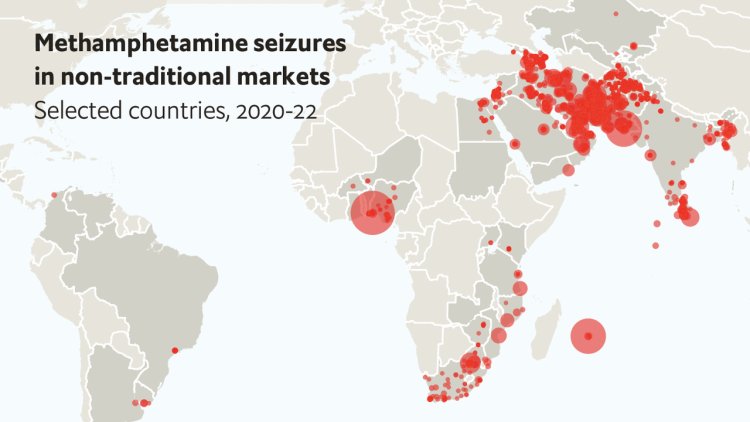Drug-trafficking networks are expanding into new territories
Global temperatures have broken records three times in a weekAre these records falling faster?STORIES ABOUT illicit drugs are often local: influenced by regional supply networks, different health care and law enforcement policies, among other things. But the latest annual World Drug Report published by the United Nations Office on Drugs and Crime (UNODC) tries to make sense of fractured and fluid global markets. The top lines are eye-popping. The UN reckons that the number of people in the world using drugs illicitly increased by 23% in the decade to 2021, to 296m people. The number of people who suffer from drug addiction has jumped by 45%, to nearly 40m, over the same period. Most of the growth in drug use is probably explained by wider consumption of cannabis and opioids evident in the UNODC’s data, the latter of which is fuelling a devastating 20-year epidemic in North America. The more striking bits of the report concern two connected trends: the increasingly global nature of drug


Global temperatures have broken records three times in a week
Are these records falling faster?
STORIES ABOUT illicit drugs are often local: influenced by regional supply networks, different health care and law enforcement policies, among other things. But the latest annual World Drug Report published by the United Nations Office on Drugs and Crime (UNODC) tries to make sense of fractured and fluid global markets. The top lines are eye-popping. The UN reckons that the number of people in the world using drugs illicitly increased by 23% in the decade to 2021, to 296m people. The number of people who suffer from drug addiction has jumped by 45%, to nearly 40m, over the same period.
Most of the growth in drug use is probably explained by wider consumption of cannabis and opioids evident in the UNODC’s data, the latter of which is fuelling a devastating 20-year epidemic in North America. The more striking bits of the report concern two connected trends: the increasingly global nature of drug-trafficking networks, and the rise of synthetic drugs.
The market for methamphetamine exemplifies both. Global seizures of meth nearly tripled between 2015 and 2021, with an increasing share coming from countries new to the trade (see map). Countries outside meth’s traditional markets in North America, East and South-East Asia and Oceania accounted for 12% of seizures in 2021, up from almost zero in 2001. Most of the growth has come from Iran and Afghanistan. It makes sense that traffickers in Afghanistan would look to meth. The Taliban began to wage war against the country’s opium trade after retaking power upon America’s chaotic withdrawal. A meth lab is much easier to hide than a field of poppies.
Unlike cocaine, heroin or cannabis, synthetic drugs do not require land or an army of cheap labourers to produce. Methamphetamine and synthetic opioids—such as fentanyl, which is up to 50 times more potent than heroin—are instead made in a lab. Sometimes their producers are scientists using professional chemistry equipment; more often they are traffickers in a basement or bunker.
Synthetic drug mixtures are also proliferating, which may have dangerous consequences. For example, traffickers are increasingly combining fentanyl and xylazine, an animal tranquiliser also known as “tranq”. These mixtures can be more dangerous than each substance alone (antidotes to opioid overdoses, such as naloxone, do not work on xylazine). It is impossible for users to dose safely when consuming these cocktails, as the proportion of each drug in the mixture can vary wildly.

Meth is not the only drug popping up in new places. The global cocaine market is expanding. Global cultivation, production and seizures of cocaine all set records in 2021 (see chart). Ever more of it is being seized in relatively new markets such as Hong Kong, Turkey and Ivory Coast.
The mutation of global drug markets suggests an industry that is constantly adapting. Adaptability is traffickers’ greatest strength, and the reason why disrupting their networks is so difficult. More than 50 years after Richard Nixon launched America’s war on drugs, the world is no closer to stamping them out. Indeed, growing drug-use numbers suggest victory in that fruitless endeavour is farther away than ever.■
What's Your Reaction?

















